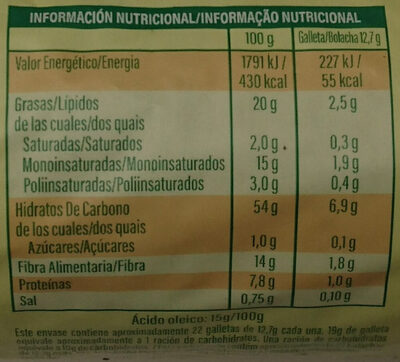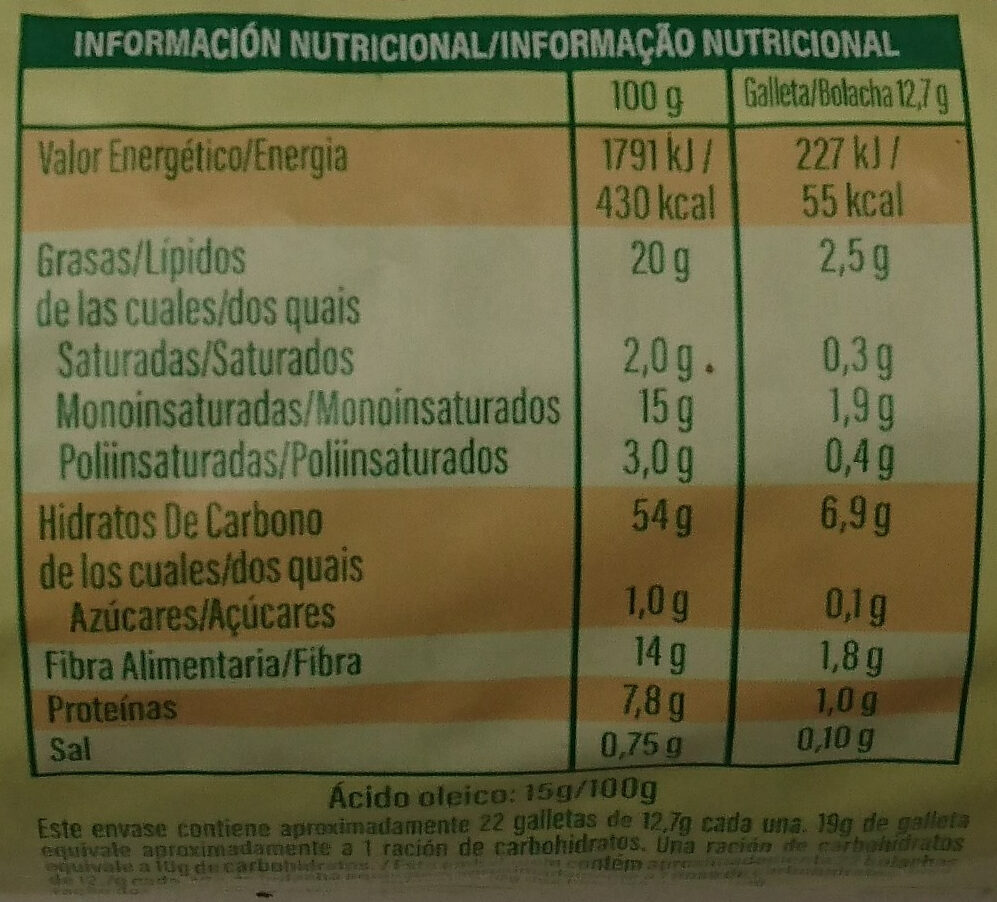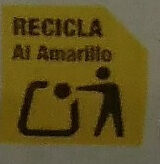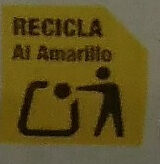Ajuda'ns a fer que la transparència alimentària sigui la norma!
Com a organització sense ànim de lucre, depenem de les vostres donacions per continuar informant els consumidors de tot el món sobre tot allò què mengen.
La revolució alimentària comença amb tu!
Galleta crocant con copos de avena zero - Gullón - 280 g
Galleta crocant con copos de avena zero - Gullón - 280 g
Aquesta pàgina del producte no està completa. Podeu ajudar a completar-la editant-la i afegint-hi més dades a partir de les fotos ja disponibles, o fent-ne més amb l'aplicació de androide o iPhone / iPad. Gràcies!
×
Codi de barres: 8410376055542 (EAN / EAN-13)
Quantitat: 280 g
Empaquetament: Paquet
Marques: Gullón
Categories: Snacks, Aperitius dolços, Galetes i pastissos, Galetes
Etiquetes, certificacions, premis:
Vegetarià, Source of fibre, Unió Vegetariana Europea, Punt verd, Alt en fibra, Sense sucre afegit, Comptador Nutricional, Grau A Nutriscore

Matching with your preferences
Salut
Ingredients
-
15 ingredients
Castellà: Cereales integrales 59% (copos de avena 34%, harina integral de trigo), aceite vegetal 18% (girasol alto oleico), edulcorante (maltitol), fibras vegetales, gasificantes (carbonato ácido de sodio y carbonato ácido de amonio), sal, aroma natural, antioxidante (extracto rico en tocoferoles).Al·lèrgens: en:Gluten, es:avena, pt:avenaRastres: en:Milk, en:Soybeans
Processament d'aliments
-
Aliments ultra processats
Elements que indiquen que el producte està al grup 4 - Aliments i begudes ultraprocessats:
- Additiu: E965 - Maltitol
- Ingredient: Aromes
- Ingredient: Edulcorant
Els productes alimentaris es classifiquen en 4 grups segons el seu grau de processament:
- Aliments no processats o mínimament processats
- Ingredients culinaris processats
- Aliments processats
- Aliments ultra processats
La determinació del grup es fa en funció de la categoria del producte i dels ingredients que conté.
Additius
-
E500 - Carbonats de sodi
Sodium carbonate: Sodium carbonate, Na2CO3, -also known as washing soda, soda ash and soda crystals, and in the monohydrate form as crystal carbonate- is the water-soluble sodium salt of carbonic acid. It most commonly occurs as a crystalline decahydrate, which readily effloresces to form a white powder, the monohydrate. Pure sodium carbonate is a white, odorless powder that is hygroscopic -absorbs moisture from the air-. It has a strongly alkaline taste, and forms a moderately basic solution in water. Sodium carbonate is well known domestically for its everyday use as a water softener. Historically it was extracted from the ashes of plants growing in sodium-rich soils, such as vegetation from the Middle East, kelp from Scotland and seaweed from Spain. Because the ashes of these sodium-rich plants were noticeably different from ashes of timber -used to create potash-, they became known as "soda ash". It is synthetically produced in large quantities from salt -sodium chloride- and limestone by a method known as the Solvay process. The manufacture of glass is one of the most important uses of sodium carbonate. Sodium carbonate acts as a flux for silica, lowering the melting point of the mixture to something achievable without special materials. This "soda glass" is mildly water-soluble, so some calcium carbonate is added to the melt mixture to make the glass produced insoluble. This type of glass is known as soda lime glass: "soda" for the sodium carbonate and "lime" for the calcium carbonate. Soda lime glass has been the most common form of glass for centuries. Sodium carbonate is also used as a relatively strong base in various settings. For example, it is used as a pH regulator to maintain stable alkaline conditions necessary for the action of the majority of photographic film developing agents. It acts as an alkali because when dissolved in water, it dissociates into the weak acid: carbonic acid and the strong alkali: sodium hydroxide. This gives sodium carbonate in solution the ability to attack metals such as aluminium with the release of hydrogen gas.It is a common additive in swimming pools used to raise the pH which can be lowered by chlorine tablets and other additives which contain acids. In cooking, it is sometimes used in place of sodium hydroxide for lyeing, especially with German pretzels and lye rolls. These dishes are treated with a solution of an alkaline substance to change the pH of the surface of the food and improve browning. In taxidermy, sodium carbonate added to boiling water will remove flesh from the bones of animal carcasses for trophy mounting or educational display. In chemistry, it is often used as an electrolyte. Electrolytes are usually salt-based, and sodium carbonate acts as a very good conductor in the process of electrolysis. In addition, unlike chloride ions, which form chlorine gas, carbonate ions are not corrosive to the anodes. It is also used as a primary standard for acid-base titrations because it is solid and air-stable, making it easy to weigh accurately.Origen: Wikipedia (Anglès)
-
E500ii - Bicarbonat de sodi
Sodium carbonate: Sodium carbonate, Na2CO3, -also known as washing soda, soda ash and soda crystals, and in the monohydrate form as crystal carbonate- is the water-soluble sodium salt of carbonic acid. It most commonly occurs as a crystalline decahydrate, which readily effloresces to form a white powder, the monohydrate. Pure sodium carbonate is a white, odorless powder that is hygroscopic -absorbs moisture from the air-. It has a strongly alkaline taste, and forms a moderately basic solution in water. Sodium carbonate is well known domestically for its everyday use as a water softener. Historically it was extracted from the ashes of plants growing in sodium-rich soils, such as vegetation from the Middle East, kelp from Scotland and seaweed from Spain. Because the ashes of these sodium-rich plants were noticeably different from ashes of timber -used to create potash-, they became known as "soda ash". It is synthetically produced in large quantities from salt -sodium chloride- and limestone by a method known as the Solvay process. The manufacture of glass is one of the most important uses of sodium carbonate. Sodium carbonate acts as a flux for silica, lowering the melting point of the mixture to something achievable without special materials. This "soda glass" is mildly water-soluble, so some calcium carbonate is added to the melt mixture to make the glass produced insoluble. This type of glass is known as soda lime glass: "soda" for the sodium carbonate and "lime" for the calcium carbonate. Soda lime glass has been the most common form of glass for centuries. Sodium carbonate is also used as a relatively strong base in various settings. For example, it is used as a pH regulator to maintain stable alkaline conditions necessary for the action of the majority of photographic film developing agents. It acts as an alkali because when dissolved in water, it dissociates into the weak acid: carbonic acid and the strong alkali: sodium hydroxide. This gives sodium carbonate in solution the ability to attack metals such as aluminium with the release of hydrogen gas.It is a common additive in swimming pools used to raise the pH which can be lowered by chlorine tablets and other additives which contain acids. In cooking, it is sometimes used in place of sodium hydroxide for lyeing, especially with German pretzels and lye rolls. These dishes are treated with a solution of an alkaline substance to change the pH of the surface of the food and improve browning. In taxidermy, sodium carbonate added to boiling water will remove flesh from the bones of animal carcasses for trophy mounting or educational display. In chemistry, it is often used as an electrolyte. Electrolytes are usually salt-based, and sodium carbonate acts as a very good conductor in the process of electrolysis. In addition, unlike chloride ions, which form chlorine gas, carbonate ions are not corrosive to the anodes. It is also used as a primary standard for acid-base titrations because it is solid and air-stable, making it easy to weigh accurately.Origen: Wikipedia (Anglès)
-
E503 - Carbonatos de amonio
Ammonium carbonate: Ammonium carbonate is a salt with the chemical formula -NH4-2CO3. Since it readily degrades to gaseous ammonia and carbon dioxide upon heating, it is used as a leavening agent and also as smelling salt. It is also known as baker's ammonia and was a predecessor to the more modern leavening agents baking soda and baking powder. It is a component of what was formerly known as sal volatile and salt of hartshorn.Origen: Wikipedia (Anglès)
-
E503ii - Carbonat àcid d'amoni
Ammonium carbonate: Ammonium carbonate is a salt with the chemical formula -NH4-2CO3. Since it readily degrades to gaseous ammonia and carbon dioxide upon heating, it is used as a leavening agent and also as smelling salt. It is also known as baker's ammonia and was a predecessor to the more modern leavening agents baking soda and baking powder. It is a component of what was formerly known as sal volatile and salt of hartshorn.Origen: Wikipedia (Anglès)
-
E965 - Maltitol
Maltitol: Maltitol is a sugar alcohol -a polyol- used as a sugar substitute. It has 75–90% of the sweetness of sucrose -table sugar- and nearly identical properties, except for browning. It is used to replace table sugar because it is half as caloric, does not promote tooth decay, and has a somewhat lesser effect on blood glucose. In chemical terms, maltitol is known as 4-O-α-glucopyranosyl-D-sorbitol. It is used in commercial products under trade names such as Lesys, Maltisweet and SweetPearl.Origen: Wikipedia (Anglès)
Anàlisi dels ingredients
-
No conté oli de palma
No s'han detectat ingredients que continguin oli de palma
-
Es desconeix si és vegà
Ingredients no reconeguts: Fibra
-
Vegetarià
No s'han detectat ingredients no vegetarians
Ingredients no reconeguts: Fibra
-
Detalls de l'anàlisi dels ingredients
es: Cereales integrales 59% (copos de _avena_ 34%, harina integral de _trigo_), aceite vegetal 18% (girasol alto oleico), edulcorante (maltitol), fibras vegetales, gasificantes (carbonato ácido de sodio, carbonato ácido de amonio), sal, aroma natural, antioxidante (extracto rico en tocoferoles)- Cereales integrales -> en:wholemeal-cereal - vegan: yes - vegetarian: yes - percent_min: 59 - percent: 59 - percent_max: 59
- copos de _avena_ -> en:oat-flakes - vegan: yes - vegetarian: yes - ciqual_food_code: 9311 - percent_min: 34 - percent: 34 - percent_max: 34
- harina integral de _trigo_ -> en:whole-wheat-flour - vegan: yes - vegetarian: yes - ciqual_proxy_food_code: 9410 - percent_min: 25 - percent_max: 25
- aceite vegetal -> en:vegetable-oil - vegan: yes - vegetarian: yes - from_palm_oil: maybe - percent_min: 18 - percent: 18 - percent_max: 18
- girasol alto oleico -> en:high-oleic-sunflower - vegan: yes - vegetarian: yes - from_palm_oil: no - ciqual_food_code: 17440 - percent_min: 18 - percent_max: 18
- edulcorante -> en:sweetener - percent_min: 3.83333333333333 - percent_max: 18
- maltitol -> en:e965 - vegan: yes - vegetarian: yes - percent_min: 3.83333333333333 - percent_max: 18
- fibras vegetales -> en:fiber - percent_min: 1 - percent_max: 11.5
- gasificantes -> en:raising-agent - percent_min: 0 - percent_max: 7.33333333333333
- carbonato ácido de sodio -> en:e500ii - vegan: yes - vegetarian: yes - percent_min: 0 - percent_max: 7.33333333333333
- carbonato ácido de amonio -> en:e503ii - vegan: yes - vegetarian: yes - percent_min: 0 - percent_max: 3.66666666666667
- sal -> en:salt - vegan: yes - vegetarian: yes - ciqual_food_code: 11058 - percent_min: 0 - percent_max: 0.75
- aroma natural -> en:natural-flavouring - vegan: maybe - vegetarian: maybe - percent_min: 0 - percent_max: 0.75
- antioxidante -> en:antioxidant - percent_min: 0 - percent_max: 0.75
- extracto rico en tocoferoles -> en:e306 - vegan: yes - vegetarian: yes - percent_min: 0 - percent_max: 0.75
- Cereales integrales -> en:wholemeal-cereal - vegan: yes - vegetarian: yes - percent_min: 59 - percent: 59 - percent_max: 59
Nutrició
-
Bona qualitat nutricional
⚠ ️Atenció: la quantitat de fruita, verdura i fruits secs no s'especifica a l'etiqueta, s'ha fet una estimació a partir de la llista d'ingredients: 0Aquest producte no es considera una beguda per al càlcul de la Nutri-Score.
Punts positius: 9
- Proteïnes: 4 / 5 (valor: 7.8, valor arrodonit: 7.8)
- Fibra: 5 / 5 (valor: 14, valor arrodonit: 14)
- Fruites, verdures, fruits secs i olis de colza/nou/oliva: 0 / 5 (valor: 0, valor arrodonit: 0)
Punts negatius: 9
- Energia: 5 / 10 (valor: 1791, valor arrodonit: 1791)
- Sucres: 0 / 10 (valor: 1, valor arrodonit: 1)
- Greixos saturats: 1 / 10 (valor: 2, valor arrodonit: 2)
- Sodi: 3 / 10 (valor: 300, valor arrodonit: 300)
Els punts per proteïnes es compten perquè els punts negatius són inferiors a 11.
Puntuació nutricional: (9 - 9)
Nutri-Score:
-
Nivells de nutrients
-
Greix en Quantitat moderada (20%)
Què us cal saber- Un alt consum de greixos, especialment de greixos saturats, pot augmentar el colesterol, que augmenta el risc de patir malalties del cor.
Recomanació: Reduïu el consum de greixos i greixos saturats- Trieu productes amb menys greixos i greixos saturats.
-
Àcid gras saturat en Quantitat moderada (2%)
Què us cal saber- Un alt consum de greixos, especialment de greixos saturats, pot augmentar el colesterol, que augmenta el risc de patir malalties del cor.
Recomanació: Reduïu el consum de greixos i greixos saturats- Trieu productes amb menys greixos i greixos saturats.
-
Sucre en baixa quantitat (1%)
Què us cal saber- Un alt consum de sucre pot provocar augment de pes i càries dental. També augmenta el risc de patir diabetis tipus 2 i malalties cardiovasculars.
Recomanació: Limitau el consum de sucre i de begudes ensucrades- Les begudes ensucrades (com ara refrescos, begudes de fruites i sucs i nèctars de fruites) s'han de limitar tant com sigui possible (no més d'1 got al dia).
- Triau productes amb menor contingut de sucre i reduïu el consum de productes amb sucres afegits.
-
Sal comuna en Quantitat moderada (0.75%)
Què us cal saber- Un alt consum de sal (o sodi) pot provocar un augment de la pressió arterial, que pot augmentar el risc de patir malalties del cor i ictus.
- Moltes persones que tenen hipertensió no ho saben, ja que sovint no en tenen símptomes.
- La majoria de la gent consumeix massa sal (de 9 a 12 grams de mitjana al dia), al voltant del doble del nivell màxim d'ingesta recomanat.
Recomanació: Limitau la ingesta de sal i d'aliments rics en sal- Reduïu la sal que emprau quan cuinau, i no afegiu sal a taula.
- Limiteu el consum d'aperitius salats i trieu productes amb menor contingut de sal.
-
-
Informació nutricional
Informació nutricional Com es ven
per 100 g/100 mlCom es ven
per porció (12.7 g)Comparat amb: Galetes Energia 1.791 kj
(430 kcal)227 kj
(54 kcal)-9% Greix 20 g 2,54 g -0% Àcid gras saturat 2 g 0,254 g -76% Àcid gras monoinsaturat 15 g 1,9 g +46% Àcid gras poliinsaturat 3 g 0,381 g +49% Àcid oleic 15 g 1,9 g +43% Hidrats de carboni 54 g 6,86 g -16% Sucre 1 g 0,127 g -96% Fiber 14 g 1,78 g +272% Proteïna 7,8 g 0,991 g +21% Sal comuna 0,75 g 0,095 g +25% Fruits‚ vegetables‚ nuts and rapeseed‚ walnut and olive oils (estimate from ingredients list analysis) 0 % 0 %
Entorn
-
Eco-puntuació C - Impacte ambiental moderat
El Eco-Score és una puntuació experimental que resumeix els impactes ambientals dels productes alimentaris.→ L'Eco-Score es va desenvolupar inicialment a França i s'està ampliant per a altres països europeus. La fórmula Eco-Score està subjecta a canvis, ja que es millora periòdicament per fer-la més precisa i més adequada per a cada país.Anàlisi del cicle de vida
-
Impacte mitjà dels productes de la mateixa categoria: B (Score: 69/100)
Categoria: Biscuit (cookie)
Categoria: Biscuit (cookie)
- Puntuació ambiental PEF ( petjada ambiental de l'aliment ): 0.35 (com més baixa sigui la puntuació, menor serà l'impacte)
- incloent l'impacte sobre el canvi climàtic: 2.88 kg CO₂ eq/kg del producte
Etapa Impacte Agricultura
80.5 %Processament
11.8 %Empaquetament
3.1 %Transport
3.2 %Distribució
1.4 %Consum
0.0 %
Bonificacions i punts negatius
-
Falta informació sobre l'origen dels ingredients
Punts negatius: -5
⚠ ️ L'origen dels ingredients d'aquest producte no està indicat.
Si estan indicats a l'embalatge, podeu modificar la fitxa del producte i afegir-los.
Si sou el fabricant d'aquest producte, podeu enviar-nos la informació amb la nostra plataforma gratuïta per a productors.
-
Embalatge d'impacte mitjà
Punts negatius: -10
Forma Material Reciclatge Impacte 1 Paquet Plàstic Recycle Alt
Eco-Score per a aquest producte
-
Impacte per a aquest producte: C (Score: 54/100)
Producte: Galleta crocant con copos de avena zero - Gullón - 280 g
Puntuació de l'anàlisi del cicle de vida: 69
Suma de bonificacions i punts negatius: -15
Puntuació final: 54/100
-
Petjada de carboni
-
Equivalent a conduir 1.5 km en un cotxe de gasolina
288 g de CO² per cada 100 g de producte
La xifra d'emissions de carboni prové de la base de dades Agribalyse d'ADEME, per a la categoria: Biscuit (cookie) (Font: Base de dades ADEME Agribalyse)
Etapa Impacte Agricultura
82.9 %Processament
7.9 %Empaquetament
3.8 %Transport
4.7 %Distribució
0.7 %Consum
0.0 %
Empaquetament
-
Embalatge d'impacte mitjà
-
Peces d'embalatge
1 x Paquet (Plàstic)
-
Materials d'embalatge
Material % Pes de l'embalatge Pes de l'embalatge per 100 g de producte Plàstic
-
Transport
-
Orígens dels ingredients
Falta informació sobre l'origen dels ingredients
⚠ ️ L'origen dels ingredients d'aquest producte no està indicat.
Si estan indicats a l'embalatge, podeu modificar la fitxa del producte i afegir-los.
Si sou el fabricant d'aquest producte, podeu enviar-nos la informació amb la nostra plataforma gratuïta per a productors.Add the origins of ingredients for this product Add the origins of ingredients for this product
Report a problem
-
Incomplete or incorrect information?
Category, labels, ingredients, allergens, nutritional information, photos etc.
If the information does not match the information on the packaging, please complete or correct it. Open Food Facts is a collaborative database, and every contribution is useful for all.
Fonts de dades
Producte afegit per elcoco
Última modificació de la pàgina del producte per 5m4u9.
La pàgina del producte, també editada per elcoco.eb2d9550ce7d9dfbc92c1b9a576ed30f, flaviato10, inf, kiliweb, laramba, musarana, off.9e2564d8b84d52999664865a1e3d4754, org-app-elcoco, roboto-app, scanbot, spotter, yogoff, yuka.UnJwUk5yMGFoOFVXdHZJSDNpMk80ZTEwMjVxcWRqeVBLdm9lSWc9PQ.












